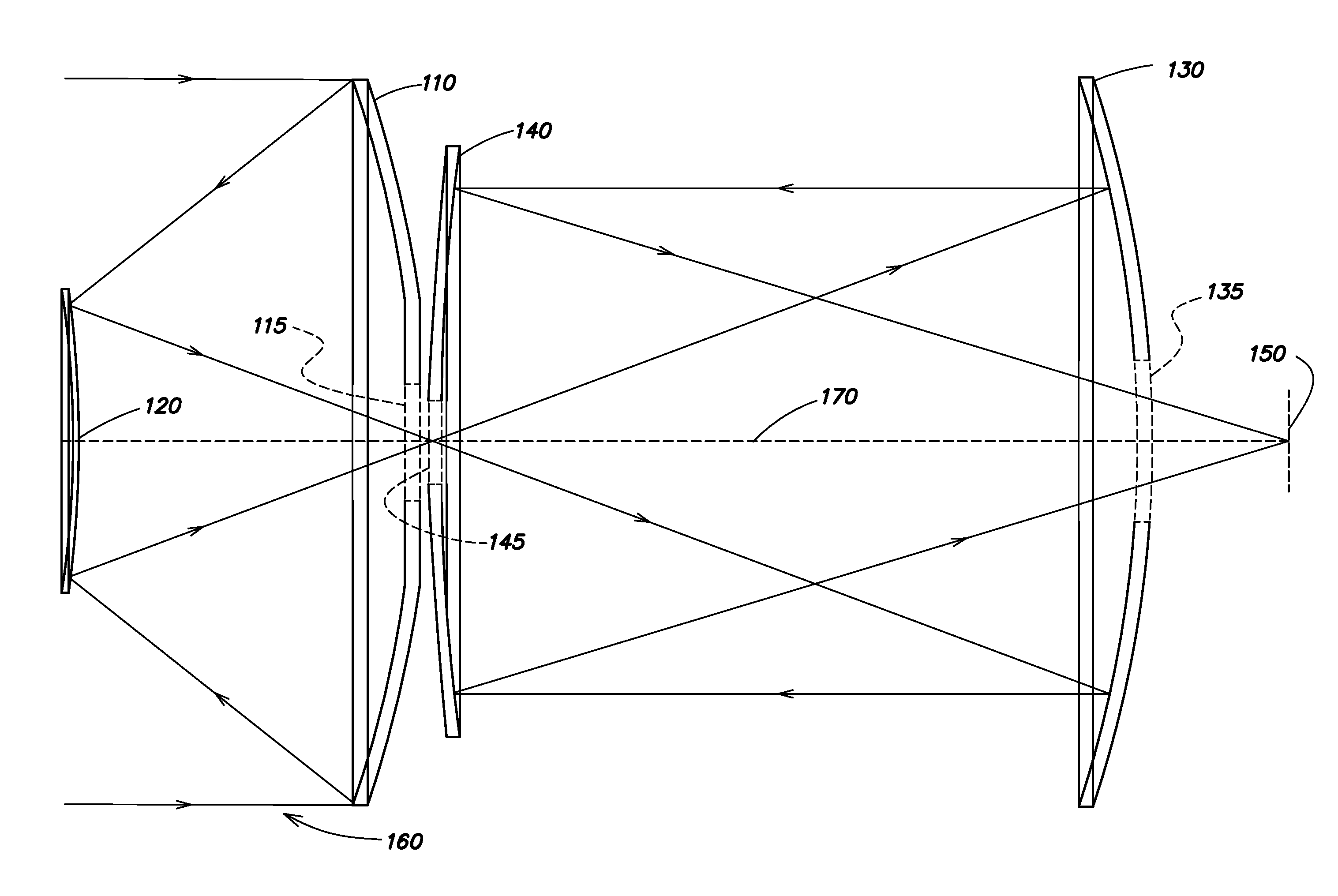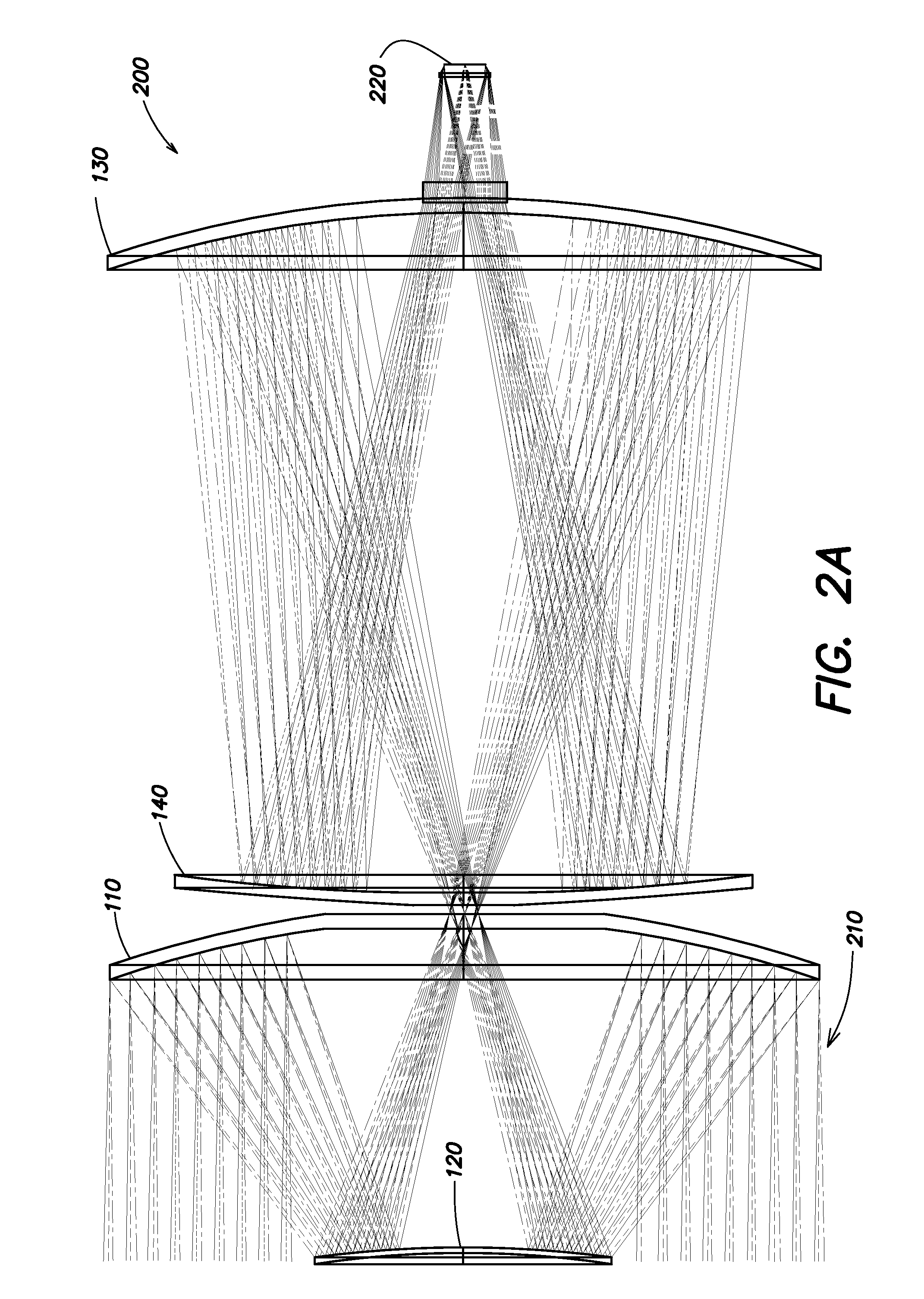Scanning telescope
- Summary
- Abstract
- Description
- Claims
- Application Information
AI Technical Summary
Benefits of technology
Problems solved by technology
Method used
Image
Examples
Embodiment Construction
[0017]A missile has aerodynamic requirements that dictate a small frontal cross-section. This small cross-section limits the optical aperture available for light collection. Applications such as missile defense require as large an aperture as possible to collect as much light as possible and to improve the diffraction limited performance. Some prior scanning telescope systems for missile-based applications have used off-axis designs, which typically do not maximize the available aperture size, and additionally have used a gimbaled system to achieve scanning. As a result, the scan rate is relatively low since a large mass (the telescope and detector assembly) must be moved; however, these systems may achieve a relatively large field of regard. Aspects and embodiments are directed to a scanning telescope in which a low-mass moving element is used for scanning, thereby allowing high speed scan motion to be achieved. Additionally, certain aspects and embodiments may be optimal for missi...
PUM
 Login to View More
Login to View More Abstract
Description
Claims
Application Information
 Login to View More
Login to View More - R&D
- Intellectual Property
- Life Sciences
- Materials
- Tech Scout
- Unparalleled Data Quality
- Higher Quality Content
- 60% Fewer Hallucinations
Browse by: Latest US Patents, China's latest patents, Technical Efficacy Thesaurus, Application Domain, Technology Topic, Popular Technical Reports.
© 2025 PatSnap. All rights reserved.Legal|Privacy policy|Modern Slavery Act Transparency Statement|Sitemap|About US| Contact US: help@patsnap.com



